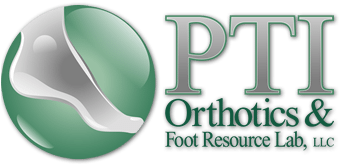Calcaneal Apophysits Condition
 Calcaneal Apophysits occurs in juveniles that are usually between the ages of 10 and 13 and are active in sports. It is characterized by pain in one or both heels with walking or running. It was originally thought that it was only seen in adolescent boys. In recent times girls have become more active than previous generations and it is now seen in girls. Patheomchanics for calcaneal apophysitis are the same as for Achilles Tendonitis. However, in apophysitis the weak link is in the growth plate or growth center within the heel bone (not in the tendon to the calcaneous, as in Achilles Tendonitis). During this phase of life, growth of the bone is taking place at a faster rate than the tendons. There is a relative shortening of the heel cord (Achilles tendon) compared to the leg bones. As a result, the tension the heel cord applied to the heel bone is very great. Moreover the heel cord is attached to a portion of the heel bone that is still immature, consisting of a mixture of bone and growing cartilage, called the calcaneal apophysis, which is prone to injury.
Calcaneal Apophysits occurs in juveniles that are usually between the ages of 10 and 13 and are active in sports. It is characterized by pain in one or both heels with walking or running. It was originally thought that it was only seen in adolescent boys. In recent times girls have become more active than previous generations and it is now seen in girls. Patheomchanics for calcaneal apophysitis are the same as for Achilles Tendonitis. However, in apophysitis the weak link is in the growth plate or growth center within the heel bone (not in the tendon to the calcaneous, as in Achilles Tendonitis). During this phase of life, growth of the bone is taking place at a faster rate than the tendons. There is a relative shortening of the heel cord (Achilles tendon) compared to the leg bones. As a result, the tension the heel cord applied to the heel bone is very great. Moreover the heel cord is attached to a portion of the heel bone that is still immature, consisting of a mixture of bone and growing cartilage, called the calcaneal apophysis, which is prone to injury.
Compounding to this is the fact that all these changes are happening in a very active child, prone to overuse. The end result is an overuse syndrome of injury and inflammation at the heel where the Achilles tendon inserts to the heel bone. A custom molded biomechanical orthotic to balance the mechanics of the foot is often prescribes as well as heel lifts to reduce tension at the Achilles insertion to the heel bone. P.T.I. Orthotic Laboratory has developed an orthotic device that incorporates a molded liquid visco-elastic polymer gel heel cup within a functional orthotic. This provides the ultimate in shock and shear absorption. This material is not foam. Foams are of a cellular nature and by design the cell walls will collapse and the cushion becomes ineffective. This visco-elastic polymer is not a cellular material and it will not bottom out. A heel lift is also incorporated into the device. This device was developed by and is only available through PTI Orthotics & Foot Resource Lab.
